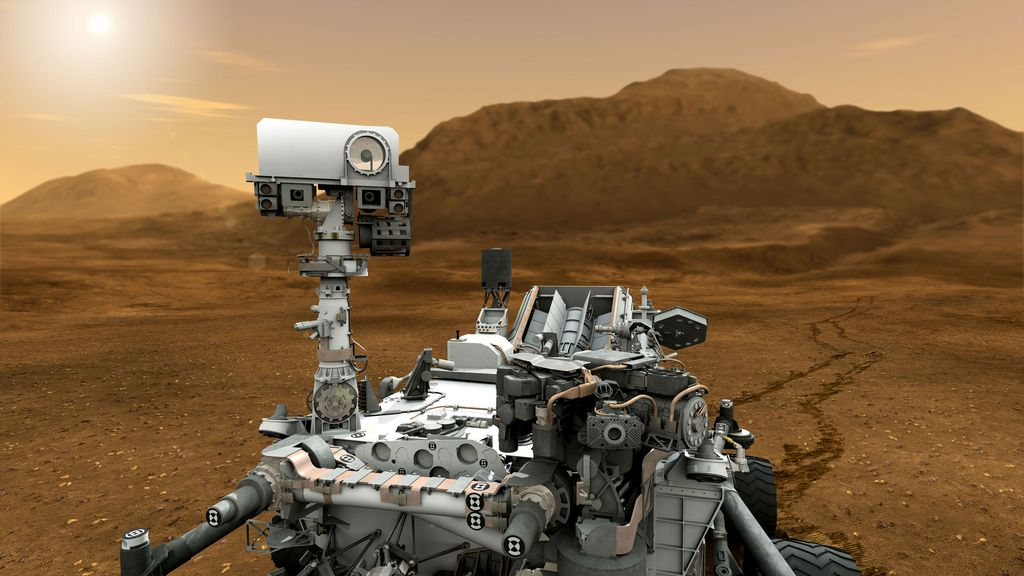
NASA's Curiosity rover has made its first measurements of the radiation environment at Mars' surface, gathering information that could help prepare future astronauts for stays on the Red Planet.
Curiosity's Radiation Assessment Detector instrument, or RAD, collected data for about 3 1/2 hours on Wednesday (Aug. 8), researchers said. Curiosity touched down inside Mars' huge Gale Crater late Sunday night.
The mission team hasn't had time to fully analyze RAD's measurements yet, so they remain in relatively raw form, scientists said.
"This is really just a snapshot, but we do see, you know, the exciting elements of what we're going to be collecting and accumulating over the next months and years as we continue on with our nominal mission," RAD principal investigator Don Hassler, of the Southwest Research Institute in Boulder, Colo., told reporters Wednesday.
"So stay tuned for future results," Hassler added.
Radiation levels are much higher on Mars than they are on Earth, for two main reasons. Mars' atmosphere is just 1 percent as thick as our planet's, and Mars does not have a worldwide magnetic field. As a result, many more fast-moving charged particles reach the Red Planet's surface.
The toaster-size RAD's main job is to measure just how high those radiation levels are, to give future Mars colonists a better idea of what they're getting themselves into. The instrument was designed primarily to help pave the way for human exploration of Mars, a key priority of NASA.
Get the Space.com Newsletter
Breaking space news, the latest updates on rocket launches, skywatching events and more!
The Curiosity team also turned RAD on for most of the rover's eight-month space cruise, to see what radiation dose travelers could expect to receive during the long flight to Mars.
RAD is one of Curiosity's 10 science instruments, the rest of which are geared toward helping the $2.5 billion rover answer one main question: Could the Gale Crater area ever have supported microbial life?
Curiosity's prime mission is slated to last roughly two Earth years. However, its nuclear power source could keep the six-wheeled robot roaming for significantly longer than that, provided that key parts don't break down, scientists have said.
To interpret the RAD measurements correctly, researchers will have to account for the background radiation produced by Curiosity's plutonium-powered radioisotope thermoelectric generator, or RTG, Hassler said.
Visit SPACE.com for complete coverage of NASA's Mars rover Curiosity. Follow SPACE.com senior writer Mike Wall on Twitter @michaeldwall or SPACE.com @Spacedotcom. We're also on Facebook and Google+.
Join our Space Forums to keep talking space on the latest missions, night sky and more! And if you have a news tip, correction or comment, let us know at: community@space.com.

Michael Wall is a Senior Space Writer with Space.com and joined the team in 2010. He primarily covers exoplanets, spaceflight and military space, but has been known to dabble in the space art beat. His book about the search for alien life, "Out There," was published on Nov. 13, 2018. Before becoming a science writer, Michael worked as a herpetologist and wildlife biologist. He has a Ph.D. in evolutionary biology from the University of Sydney, Australia, a bachelor's degree from the University of Arizona, and a graduate certificate in science writing from the University of California, Santa Cruz. To find out what his latest project is, you can follow Michael on Twitter.








